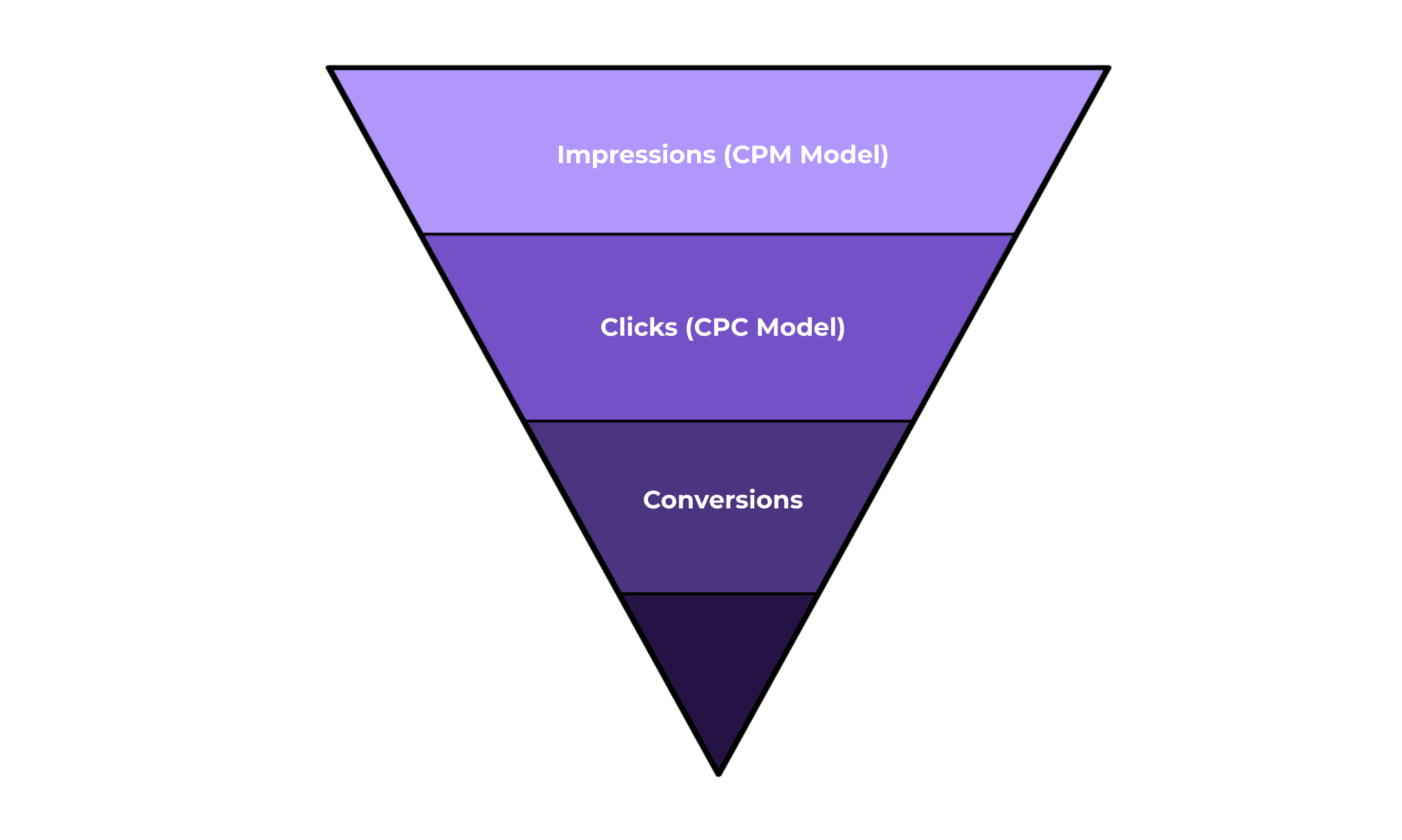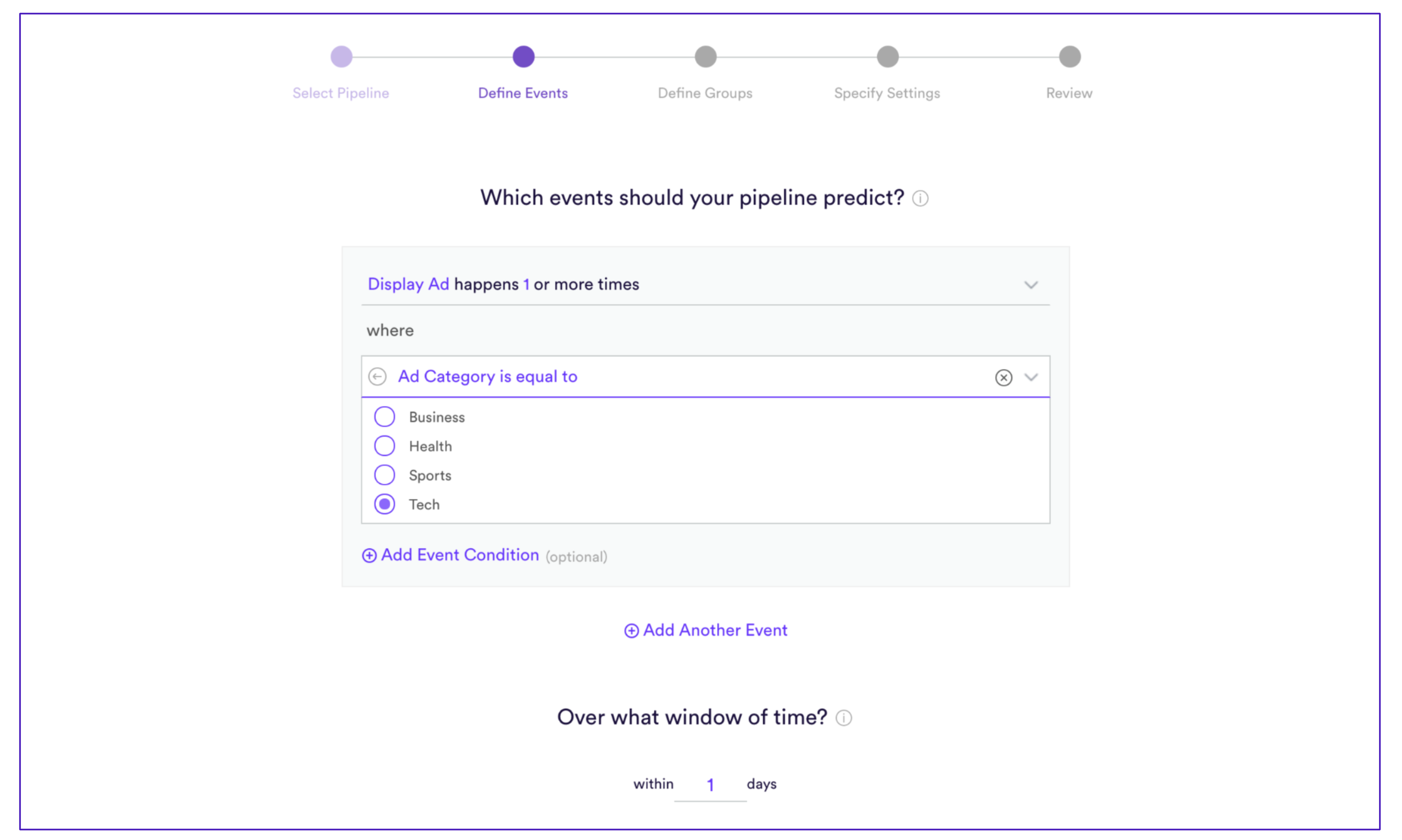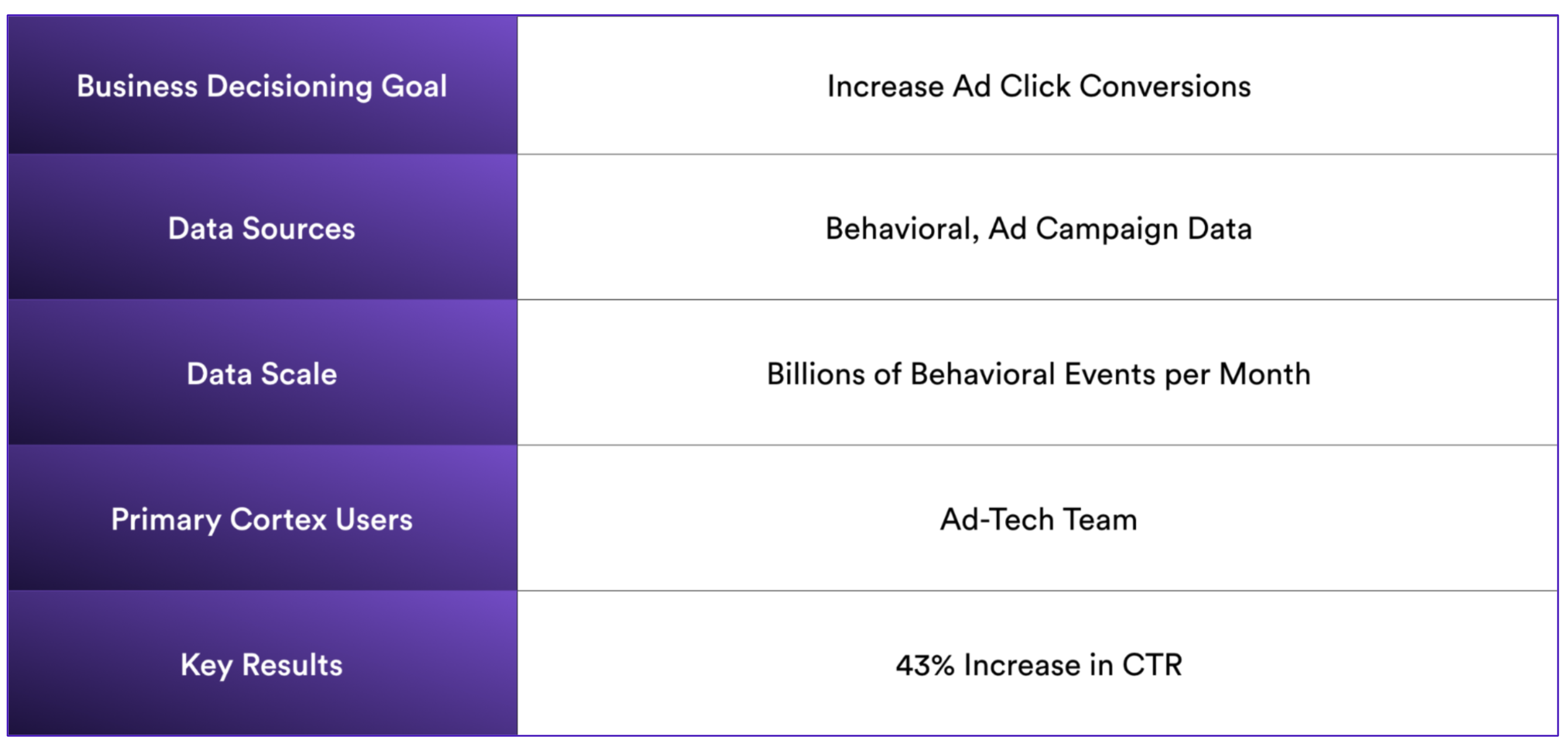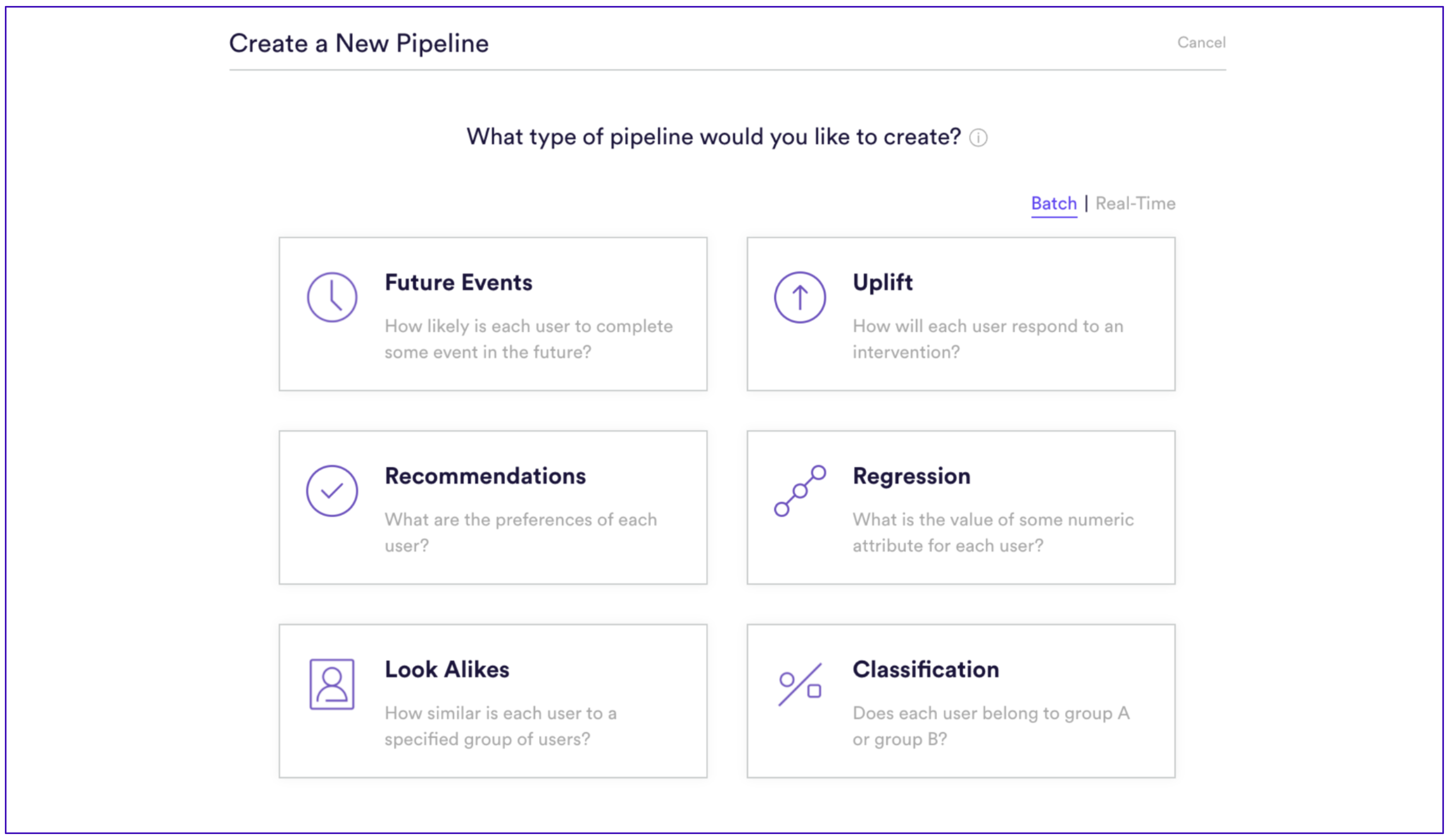The Results:
Increase in Ad Conversions

Increase in Ad Conversions
Brands are increasingly looking for innovative ways to market to their customers. In addition, brands are exploring a broader set of accountability when it comes to the measurement of their digital advertising campaigns. As a result, sell-side media companies are moving beyond impression-based digital ad models (typically monetized in a CPM context) to models which focus on optimizing for downstream conversion events. Optimizing for conversion events enables brands to measure and understand the immediate impact of their ad spends.
A major media brand leveraged Cortex to offer innovative sell-side ad products to the market. In particular, the media brand used Cortex to optimize for user clicks on ads over the more traditional look-alike and classification modeling which are measured using CPM metrics.
The media company was interested in launching a new product on the market focused on optimizing for user engagement with ads and offering that product to their major advertising partners. The ultimate goal for the media company and brand advertisers is to launch campaigns optimizing for down-stream conversions.
Some of the challenges building out these new segments included –

Brands are increasingly looking for more accountability from their ad campaigns. One mechanism to achieve more accountability is to optimize for down-stream metrics like Clicks and Conversions and not Impressions.
The media team turned to Cortex in order to both build out the ad segments but also to configure the ongoing automation of those ad segments into their DMP which was used by their ad server for targeting.
The media team collects billions of behavioral events on an ongoing basis which can be used to not only build ad segments but also to set up the target goal for the decisioning – namely user clicks on ad campaigns. The behavioral events included information around which site a user visited and what articles a user read.

Cortex is used to transform billions of behavioral events into machine learning decisions which predict, for each user, which ad segment they belong in.
The media company was able to build out new segments based on seed sets for impression-based cohorts and clicks for CTR-based cohorts. Both impression-based cohorts and click-based cohorts were easily built by the ad-tech team with a few interactions within Cortex. Cortex helped the media company automatically generate over 200 features used for machine learning from the behavioral events. These features included changes in reading behaviors on specific genres, total engagement on particular media sites over a variety of time windows, and clicks on ad campaigns over a variety of time windows.
The media ad-tech team then setup a schedule for the export of the machine learning cohorts into the appropriate DMP. In this case the schedule was set to be every week on Sunday.

The media ad-tech team next ran a test gauging the click-through-rate (CTR) of users targeted using an impression-based segment to users targeted using a segment optimized by looking at user clicks. The impression-based segment was built using the Cortex Classification and Look-alike Models from seed sets of users deemed to be in each cohort. The click-based segments were built using Future Events pipelines which predicted the likelihood of a user clicking on the ad campaign.

Machine Learning Pipelines available in Cortex. The impression-based segments were built using Classification and Look Alike pipelines. The click-based segments were built using Future Events pipelines.
After running a 2-week test the CTR of users deemed to be 90% or more likely in the impression-based campaign was compared to the CTR of users in the click-based campaign. The results was that users who were in cohorts optimized for clicks were 43% more likely to click on ad then users who were optimized based on impression cohorts. The media team acknowledged that the data used for decisioning was sparse, consisting almost entirely of behavioral engagement data, and thus that the increase in CTR was particularly compelling.
Given the positive results, the media company will be exploring building out campaigns which optimize for metrics even further down-funnel like conversions. The increasing demand by brands for visibility and accountability will enable the media company to offer products which align with the interests of the brands and ultimately a unique competitive advantage in the market.
Learn More Today